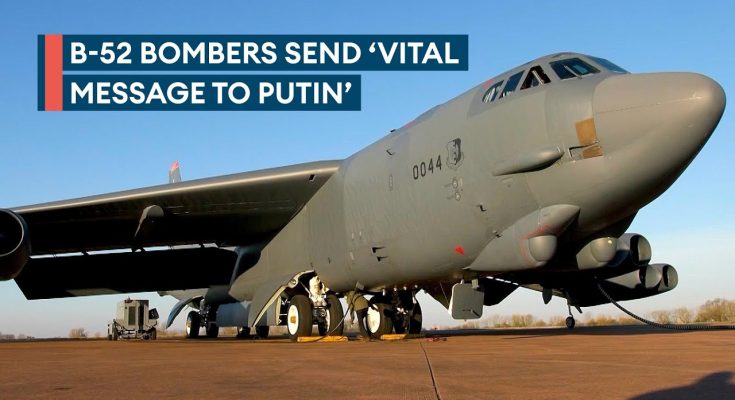U.S. Bomber Task Force Boosts NATO with Deterrence Missions Across Europe
In an era marked by growing geopolitical tensions, the U.S. Air Force Bomber Task Force has become an essential component of NATO’s strategy for deterrence and reassurance. Regular deployments of B-52 Stratofortresses, B-2 Spirits, and increasingly, the B-1 Lancers to European airbases have significantly bolstered NATO’s defensive posture. These deterrence missions not only demonstrate the U.S. military’s ability to project force across the globe, but also strengthen its commitment to European security and the NATO alliance.
Power Projection in the European Theater
The Bomber Task Force (BTF) is a strategic initiative designed to showcase the versatility and power of U.S. strategic bombers. By routinely deploying to European airbases, the U.S. demonstrates its global reach, with the ability to rapidly move assets and provide a potent deterrent against potential adversaries.
During these deterrence missions, bombers from the BTF conduct various types of operations, including integrated exercises with NATO allies, show of force flights, and nuclear and conventional strike missions. The U.S. Air Force ensures that its bombers remain ready to respond to any situation, anywhere in the world, while strengthening the interoperability and cohesion of NATO forces.
The presence of these bombers in Europe serves as a visible reminder of NATO’s combined strength and resolve. Whether conducting high-altitude missions, close air support for ground operations, or providing rapid-response capability, the BTF plays a crucial role in reassuring NATO members of the U.S. commitment to their defense.
Reinforcing NATO’s Collective Defense
The strategic importance of the Bomber Task Force goes beyond showcasing power — it is a critical part of NATO’s collective defense strategy. The alliance’s core principle is that an attack on one NATO member is considered an attack on all, and the BTF’s missions are vital in reinforcing that commitment.
Bomber deployments provide an opportunity for NATO members to train together and improve operational readiness in a realistic, high-stakes environment. Joint exercises and coordinated operations foster a sense of shared responsibility, enhancing communication, interoperability, and trust among NATO’s diverse military forces.
From Poland to the Baltic States, and across the Mediterranean to the Black Sea region, the U.S. bomber presence also serves as a direct counterbalance to rising threats from Russia, terrorist groups, and other state and non-state actors seeking to destabilize the region. These bombers are capable of carrying both nuclear and conventional weapons, giving NATO flexible and credible deterrence options in the face of any aggression.
Flexibility and Strategic Deterrence
One of the key strengths of the Bomber Task Force is its strategic flexibility. Bombers, unlike fighter jets, can carry a wide range of weapons and maintain long operational ranges. This allows them to adapt to a variety of mission sets, from high-intensity conflict to low-intensity operations.
The ability to fly into contested airspace and launch precision strikes gives the BTF a significant advantage in maintaining strategic deterrence. This flexibility extends to nuclear deterrence, where the bombers serve as a visible reminder of NATO’s nuclear capability and commitment to protecting its members.
Additionally, the B-52 Stratofortress, B-2 Spirit, and B-1 Lancer all have the ability to carry advanced munitions like JDAMs, precision-guided bombs, and cruise missiles, making them highly adaptable for various mission objectives. This broad array of capabilities allows NATO to send a powerful message to potential adversaries.
Strengthening U.S.-NATO Partnerships
The Bomber Task Force’s presence in Europe highlights the ongoing importance of U.S.-NATO cooperation in maintaining regional stability. These missions demonstrate a robust commitment to the principles of peace through strength, while also reinforcing NATO’s position as a united and formidable alliance.
By participating in joint exercises and engaging in continuous operational rotations, the U.S. and NATO forces build the skills necessary to confront evolving threats. In an increasingly volatile world, the U.S. Bomber Task Force is a reminder that NATO’s collective defense capabilities remain second to none.



